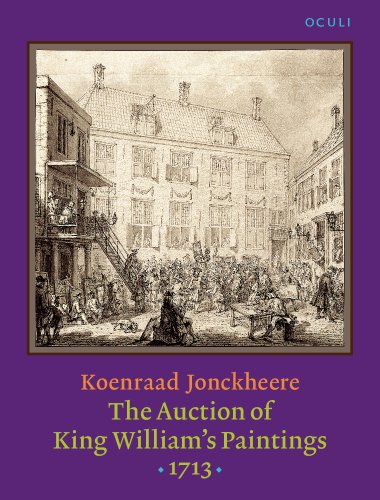 |
| Picture: Amazon |
Haskell begins by taking us on a tour of Charles I's London, pointing out the palaces of art and enumerating their treasures. He describes a shallow art world in England, based around only a handful of aristocratic collectors. English art collecting collapsed after the civil war dispersal, and didn't fully resume until the dispersal of continental collections after French Revolution and subsequent wars. But for a short period some of the world's greatest art treasures could be seen in a small area of London.
Francis Haskell died in 2000, but the text of his Paul Mellon Lectures has been edited by Karen Serres for this new book. Nicholas Penny's introduction notes areas that Haskell would doubtless like to have developed further, but despite its brevity and its lacunae this is a superb book; well-written, beautifully produced and erudite. Although some areas could have been further developed, it is more comprehensive than some heftier studies because it provides better context, situating Charles I's collection alongside those of his courtiers, and their collections of paintings alongside their collections of sculpture and drawings. It is in the field of drawings that Britain has benefited most from Carolean collecting. The great collections of Renaissance drawings not only stayed in the country, but inspired and instructed Britain's artist-collectors like Sir Peter Lely, Sir Joshua Reynolds and Sir Thomas Lawrence.
Much of Charles I's collection was parceled up and handed over to syndicates of his creditors, which meant that tailors and drapers came briefly to possess masterpieces by Raphael and Correggio:
"we have been witnessing what is perhaps the single most extraordinary episode in the history of English art collecting, or indeed that of any other nation. Great masterpieces painted by Correggio and Titian, by Raphael and Holbein, by Rubens and van Dyck, for kings and princes, cardinals and courtiers were now to be found in small houses scattered through London and the countryside belonging to haberdashers and glaziers, cutlers, musicians and painters. It is hard not to be reminded of the surprise felt in these very years by English travellers when they saw how widespread was the distribution of pictures in Holland ... The English market was not so democratic, but neither was it aristorcratic, or even oligarchic. It did not, however, last for long." (pp. 146-151)
Haskell's subject was the consumption of art rather than its production. He wrote about patrons rather than artists, and focused on collecting rather than connoisseurship. But he was an art historian as well as an historian, and this book is particularly sensitive to the taste and connoisseurship of Charles I, the Earl of Arundel and the Dukes of Buckingham, Northumberland and Hamilton. He discusses their fondness for the Bassano family, and Charles I's surprising disdain for Veronese - in contrast to Arundel and Buckingham. He discusses their quest for Leonardo, noting that only Charles I was successful in obtaining St John the Baptist. Readers in 2013 will of course be aware that he had a second Leonardo, the recently rediscovered Salvator Mundi, oddly not mentioned by the editor even as a footnote.
Haskell enthuses over the Vendramin Family portrait more than I would, and I wondered if the caption on the plate ('Titian and Workshop') was subtle editorialising (if so, I approve!). It was bought by the National Gallery from the Duke of Northumberland in 1929; I'd sooner have had Bellini's Feast of the Gods, sold by the same family just over a decade earlier. On the other hand, the St Margaret in Vienna is listed as Raphael in the credit; it's surely more a studio piece than the Vendramin Family. But now I'm just nitpicking.
This is a wonderful book: short, sumptuous and readable, and provocative, rigorous and serious. Highly recommended.
 A related book worth looking at is Koenraad Jonckheere The Auction of King William's Paintings 1713: Elite international art trade at the end of the Dutch golden age John Benjamins 2008, which is particularly strong on the network of dealers and advisors, and has some interesting information about details like how pictures were transported and how auctions were publicised and managed. Not as spectacular as the Commonweath sales, but another fascinating story of the international art trade in the subsequent century, and this is a book that deserves to be better known.
A related book worth looking at is Koenraad Jonckheere The Auction of King William's Paintings 1713: Elite international art trade at the end of the Dutch golden age John Benjamins 2008, which is particularly strong on the network of dealers and advisors, and has some interesting information about details like how pictures were transported and how auctions were publicised and managed. Not as spectacular as the Commonweath sales, but another fascinating story of the international art trade in the subsequent century, and this is a book that deserves to be better known.

Great! Francis Haskell is one of my favourite art historians. I didn't know about this though. Agree totally about Feast of the Gods. I'd also recommend Jonathan Brown's book on the art of Kings and Connoisseurs- but you probably know it.
ReplyDeleteDavid
Thanks - yes, agree the Jonathan Brown book is also excellent. More substantive than these lectures, and providing a different context by setting Charles among the European 'megacollectors' rather than the other English aristos. The new Haskell is the best I've read on Charles I's collection, though. Despite its brevity, his learning shines through and his judgments are more adroit than others. Glad you're also a fan!
ReplyDelete